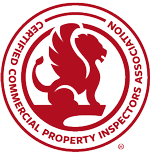Strategic planning for your commercial property inspection company can feel overwhelming without a clear structure. That’s where a SWOT analysis comes in. It breaks things down into four categories—Strengths, Weaknesses, Opportunities, and Threats—to give you a clear snapshot of what’s working, what’s not, where you can grow, and what external factors to keep an eye on. For commercial property inspection companies, it’s a practical way to focus your efforts, adapt to market conditions, and stay competitive.
Use this article as a reference when completing the SWOT Analysis Worksheet for your company.
When to Use a SWOT Analysis
Whether you’re launching your business, expanding into new markets, or fine-tuning your operations, SWOT can help guide your decisions and enhance your competitive edge. Your objective might be to identify challenges, reaffirm goals, or create an action plan.
In addition to business development, a SWOT analysis is useful when you want to:
- Explore new opportunities or address persistent challenges.
- Prioritize goals and targeted areas based on internal strengths and external market conditions.
- Decide between growth paths or strategic directions when facing key turning points.
- Expand into new markets, property types, and service areas.
- Launch or enhance services, such as cost-to-cure tables or maintenance inspections.
- Strengthen your competitive position through better branding, pricing, and/or specialization.
- Reassess your business approach and act on what you’ve learned using recent experiences, growth, client feedback and needs, or KPIs (i.e., sales, financial, marketing, etc.).
- Adjust your operations to respond to emerging threats, market shifts, and competitive pressures.
- Pull together what you’ve seen, heard, and researched, and organize the insights gathered from inspections, client interactions, and industry or competitor research.
- Adapt to evolving client expectations, regulatory changes, and client or inspection standards.
SWOT is also a useful way to communicate your strategy with your team or collaborators, or to clarify your own direction if you’re running the business independently.
Internal Factors: Strengths and Weaknesses
These are elements within your control, such as your tools, team, training, processes, and marketing.
Strengths
What does your company do well?
- Inspectors are certified and trained specifically for commercial property inspections (i.e., CCPIA® Certified), demonstrating credibility and industry alignment.
- You enjoy a strong reputation and consistent referrals from brokers, investors, and property managers.
- You use streamlined reporting tools and clear, professional deliverables and commercial-focused formatting.
- You have an efficient client intake process that ensures that clients receive a professional experience.
- You use a clear and effective sales funnel (from phone or website inquiry to client relationship management).
- You employ established inspection procedures and scope-setting practices (i.e., pre-booking interview and proposal process).
- You offer flexible scheduling to accommodate occupied buildings and off-hours inspections.
- You demonstrate the ability to collaborate with other inspectors or specialists for complex jobs (i.e., environmental assessments).
- You regularly complete ongoing professional development and inspection training.
- You have the capability to offer value-added services, like routine maintenance inspections, cost-to-cure reports, and capital planning insights.
- You identify and focus on specialty areas (i.e., client types, building types, or inspection services).
- You possess a strong understanding of building systems and how they affect long-term ownership and financial planning.
- Your marketing is well-stocked with both physical items (business cards, flyers, folders) and digital assets (company booklet, proposal templates, flyers) to support your branding, client outreach, and professional presentations.
- Your company enjoys a strong online presence that’s targeted to the CRE market and commercial-specific services.
Weaknesses
Where are you falling short, and what’s holding you back?
- You have a limited understanding of commercial real estate (CRE) clients and their business priorities.
- You’re uncertain or lack confidence when conducting inspections, quoting fees, defining the scope of work, and/or building client relationships.
- Your company lacks an online presence or you have an outdated website that doesn’t reflect current commercial-specific services or target the right audience (for example, if you’ve moved from residential to commercial, your website is still geared toward residential inspections).
- You lack experience with large-scale, specialized, or high-value property types.
- There are gaps in your technical training (i.e., commercial kitchens or complex building systems).
- You use weak or inconsistent marketing that doesn’t clearly convey your commercial expertise.
- Your reporting templates are inappropriate or underdeveloped for specific commercial inspections and their prospective clients.
- You rely too much on residential inspection methods, mindset, or vernacular.
- Your tools are inadequate for commercial-scale inspections (i.e., roof access gear, electrical testers, thermal imaging).
- You lack professional field attire.
- Your workflow for inspections and report writing are insufficient for commercial jobs.
- You’re experiencing difficulty adapting your approach to different clients, commercial building inspection processes, or property types.
- You haven’t assembled a reliable team of go-to specialty consultants to support your inspections and assist with cost estimates and repair scopes.
- You lack adequate business documents for commercial-specific services, such as agreements and contracts (everything should be updated to reflect the ComSOP’s scope).
- Your reporting templates and narratives are geared toward residential structures (i.e., using “home” instead of “building” or “property”).
External Factors: Opportunities and Threats
These are outside forces that can influence the viability and success of your business. There are some you can leverage, and some you need to prepare for.
Opportunities
Where can you grow or gain a competitive advantage?
- There is a rising demand for inspections during CRE transactions, refinancing, insurance renewals, and lease turnovers.
- You can exploit opportunities for ongoing business from past clients, your existing client base, and portfolio managers.
- There may be referral opportunities from current or past clients, real estate agents, or business owners you know.
- As more insurance companies require inspections for policy renewals, you’ll have a greater opportunity to market to both insurance companies and policy holders.
- More work is available that’s related to lease turnover or re-occupancy.
- You can form partnerships with other professionals (i.e., environmental firms and specialty consultants).
- There may be a shortage of qualified commercial property inspectors in your local area, especially where residential-only inspectors dominate.
- Consider expanding to a larger geographic service area with fewer qualified commercial property inspectors.
- Legislative changes may increase inspection demand (i.e., balcony inspections, accessibility assessments, rental property compliance).
- Advancements in technology (i.e., drones, AI tools, moisture scanning) can improve accuracy, efficiency, and reporting quality.
- Offer maintenance inspections or recurring service contracts to create consistent revenue streams.
- Raise awareness of deferred maintenance and aging infrastructure, increasing demand for capital planning assessments.
Threats
What could negatively impact your business?
- Local or national CRE market economic downturns may slow CRE investment, new transactions, or client budgets (this could relate to a specific area, building types, client type, inspection types, etc.).
- Competitors may be undercutting pricing without matching quality.
- Budget constraints may surge in client sectors, like government, nonprofits, or education.
- Changing demographics or client turnover can disrupt long-term relationships.
- Miscommunication, scope confusion, or negative online reviews can hurt your reputation.
- You may be relying on too small a number of referral sources or inspection types.
In summary, strengths and weaknesses are internal because they’re things you can control, while opportunities and threats are external because they’re things you can’t control directly, but you can respond to or plan around them.
Ready to get started with a SWOT analysis?
Other Planning Tools to Consider
If you’re looking for additional structure, you can pair SWOT with other frameworks:
- SOAR (Strengths, Opportunities, Aspirations, Results):
- Use this for a more action-driven planning approach.
- It’s a more forward-looking, action-oriented version of SWOT. Use this if you want to build on your strengths and set measurable goals, like increasing market share in a specific property type or developing a new service offering.
- Competitor Analysis:
- Use this to collect and use information about competitors with the end goal of finding a market edge.
- Learn how to conduct a competitor analysis here and download the spreadsheet to get started.
- Porter’s Five Forces:
- Assess competition and market forces.
- Understand the competitive landscape. You can assess things like the number of competitors in your market, how easily clients can switch to other inspectors, and how much influence suppliers (like software or insurance providers) have.
- PESTLE (Political, Economic, Social, Technological, Legal, Environmental):
- Use this for analyzing political, economic, social, technological, legal, and environmental factors.
- It’s not for daily task management or project prioritization, but it can be useful for strategy. Consider it a high-level scan of external factors that could impact your business.
- Win/Loss Analysis:
- Use this guide to understand why clients choose or don’t choose you.
- Review past jobs to understand why you won or lost the work. Was it your price? Timing? Sales skills? Sales funnel? Lack of specialization? This helps you refine your proposal strategy, pricing, and communication style.
- Use this Win/Loss Analysis Spreadsheet Template to track and visualize commercial property inspection and client metrics.
Additional Resources for Commercial Property Inspectors:
- SWOT Analysis Worksheet
- Proposal Win/Loss Analysis for Commercial Property Inspection Companies
- Proposal Win/Loss Analysis Spreadsheet
- Business Development Resources
- Competitor Analysis for Commercial Property Inspectors
- Competitor Analysis Spreadsheet
- Mock Commercial Inspection Course: Pre-Inspection to Final Report Business Practices


